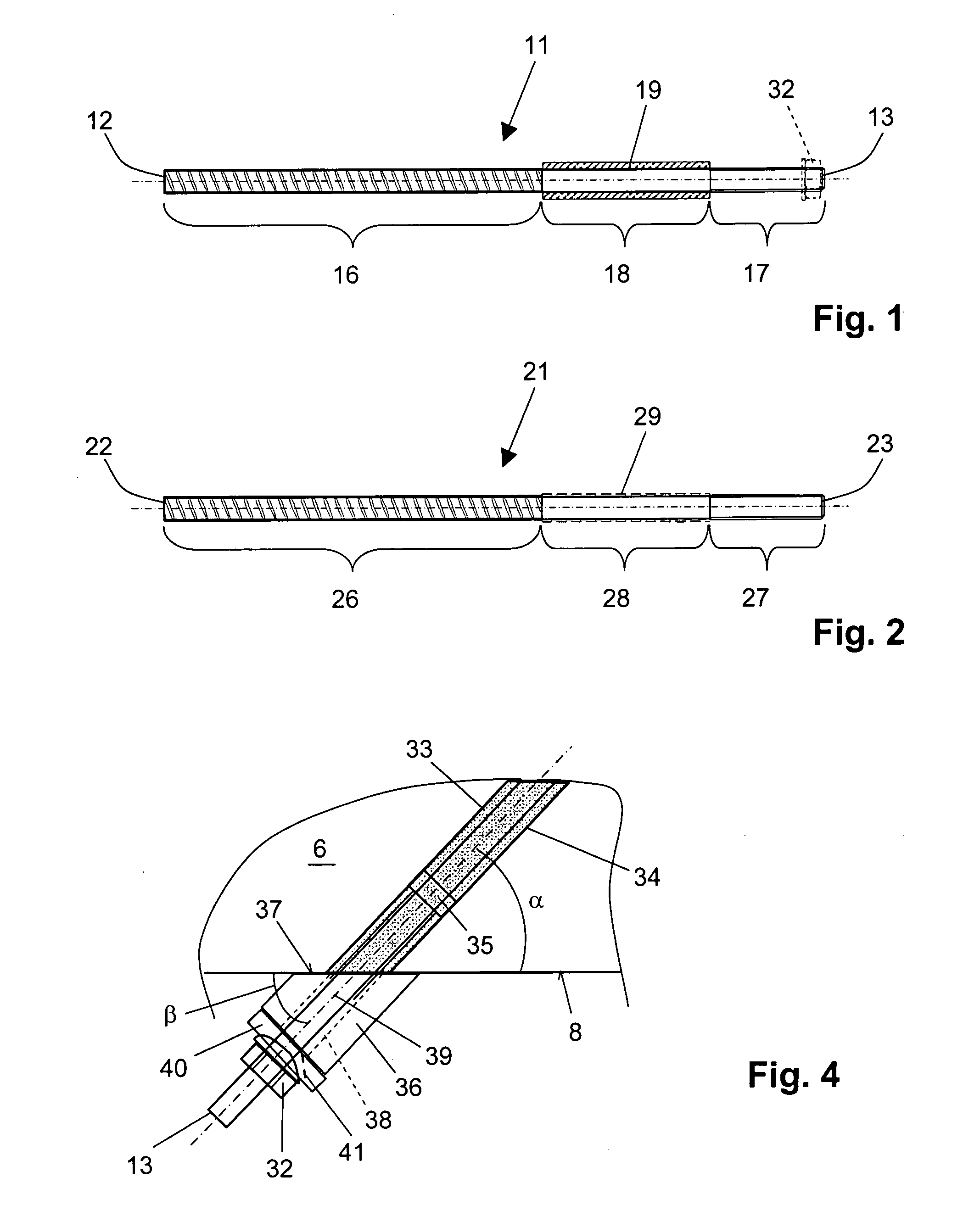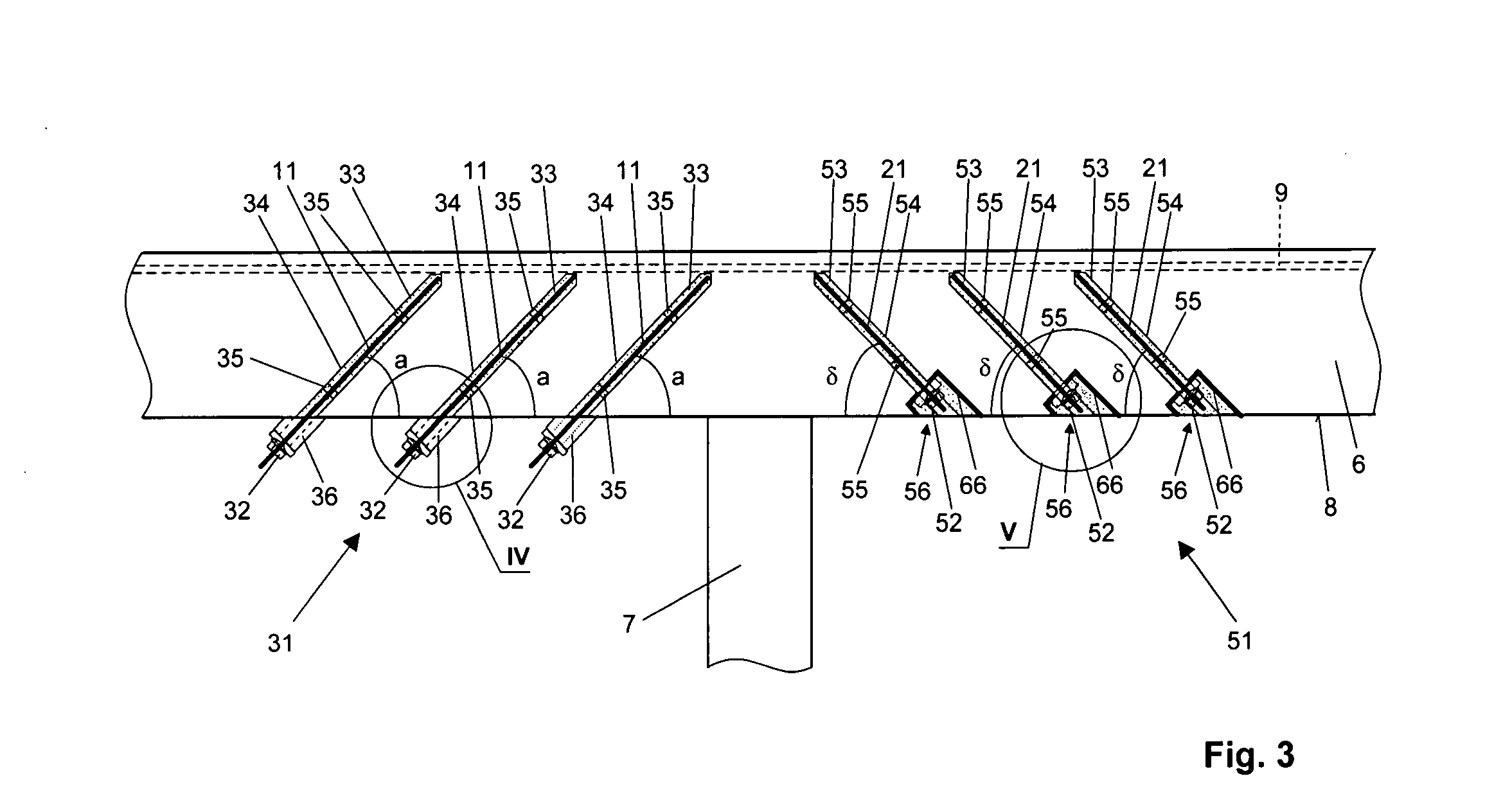Anchor bar and arrangement for reinforcing existing components against punching shears with such anchor bar
a technology of anchor bars and existing components, which is applied in the direction of dowels, structural elements, building components, etc., can solve the problems of inability to economically produce mass production parts, increase the manufacturing cost of anchor bars, and the non-embedded region of anchor bars is not precisely guided in the borehole, so as to prevent the soiling of the working region
- Summary
- Abstract
- Description
- Claims
- Application Information
AI Technical Summary
Benefits of technology
Problems solved by technology
Method used
Image
Examples
first embodiment
[0038] With the arrangement 31 as shown with reference to FIG. 3, to the left of the pillar 7, and in detail in FIG. 4, first, boreholes 34 are formed up to the level of an upper reinforcement 9 of the slab floor 6 and at an angle α of about 45° to the outer surface 8 of the slab floor 6 and toward the pillar 7. Then, each borehole 34 is filled with mortar form a hardenable mass 33. Advantageously, a hold-up plug is used that prevents to a large extent undesirable air pockets in the hardenable mass 33 during the filling process. The anchor bar 11 is inserted in the borehole 34 filled with the hardenable mass 33. A bevel washer 36 is placed over the free end 13 of the anchor bar 11. The angle β of the bevel 37 of the washer 36 to the axis 39 of the through-opening 38 for the anchor bar 11 corresponds to the angle α of the borehole 34 to the surface 8 of the slab floor. There is further provided a sealing washer 40 that is secured with the preloading means 32 and that is provided wit...
second embodiment
[0039] With the arrangement 51 as shown with reference to FIG. 3, to the right of the pillar 7, and in detail in FIGS. 5-6, first, boreholes 54 are formed up to the level of an upper reinforcement 9 of the slab floor 6 and at an angle β of about 50° to the outer surface 8 of the slab floor 6 and toward the pillar 7. Then, at each borehole 54 and centrally thereto, a recess 56, which opens toward the outer surface 8 of the slab floor 6, is formed, e.g., with an annular core bit. Then, each borehole 54 is filled with a mortar from hardenable mass 53, and a pot-shaped reinforcing element 66 is placed in the recess 56. Then or, alternatively, before placement of the reinforcing element 66 in the recess 56, the anchor bar is inserted in the borehole 54. Over the free end 23 of the anchor bar 21, a two-part washer 61, which serves as a support element, is mounted and is secured with the preloading means 52. The washer 61 has a first part 62 with a convex receptacle and a second part 63 w...
PUM
 Login to View More
Login to View More Abstract
Description
Claims
Application Information
 Login to View More
Login to View More - R&D
- Intellectual Property
- Life Sciences
- Materials
- Tech Scout
- Unparalleled Data Quality
- Higher Quality Content
- 60% Fewer Hallucinations
Browse by: Latest US Patents, China's latest patents, Technical Efficacy Thesaurus, Application Domain, Technology Topic, Popular Technical Reports.
© 2025 PatSnap. All rights reserved.Legal|Privacy policy|Modern Slavery Act Transparency Statement|Sitemap|About US| Contact US: help@patsnap.com



